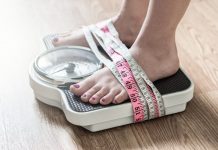Choosing the right mountain bike size for teenagers matters because it helps them start riding safely and effectively. If they choose the right size, they might need help to ride properly or they might even fall off their bikes.
Mountain biking has become very popular among teenagers. Many parents are concerned about their safety when riding a mountain bike.
A teen’s height and body type should be considered when choosing a mountain bike. A mountain bike for a teenager should be selected with a number of factors in mind. Find out more by reading on!
It’s Important To Have The Correct Bike Size
Bike sizing is crucial because it affects the performance of your bike and the comfort level you experience riding it. You will likely experience discomfort or injury if you don’t get the correct size.
There are two basic types of bikes:
- Road Bikes: Road bikes are designed for flat roads and paved paths. Road bikes typically range between 50cm and 60cm in width.
- Mountain Bikes: It is designed to be used on trails and dirt paths off-road. Mountain bikes are usually wider, ranging between 65cm and 75cm.
Both types of bikes come in different sizes. There are also hybrid bikes like Turbo Kenevo, which combine the features of road bikes and mountain bikes and tend to be narrower than either type of bike.
Issues Caused by Improperly Sized Bikes
Bikes come in various sizes, from children’s bikes to adult bikes. If you’re looking for something specific, you might consider buying a bike that fits your height and body type.
Before purchasing a bicycle for teens, you should consider a few things. Let’s know them:
- Wrist Pain: The bike size you choose has a great deal to do with whether or not you’ll suffer wrist pain after riding it. Your comfort may be compromised if you do not get the correct fit.
- Back Pain: Incorrect bike sizing is often the cause of lower back pain for many people. The majority of cyclists don’t measure the height of the seat correctly, according to a recent study. This means that half of us are riding bikes that aren’t suitable for our bodies.
- Fatigue: When choosing a bike, you should always measure your body at its largest point. This is where you’ll want to place the saddle, handlebars, and pedals. Incorrect bike size can cause fatigue.
- Higher Crash Risks: Too big a bike size can affect your bike control. It will also possess higher crash risks.
Tips for Choosing The Right Mountain Bike for Teenagers
Today, there are a variety of bike types and sizes available. Riders of all levels can enjoy some of them, while others are designed for beginners. Before you purchase a bike, you should consider some important features when buying a mountain bike for teenagers.
1. Pedal size
When choosing a mountain bike for a teenager, the first thing to consider is pedal size. Pedals should be sized appropriately for their feet, not just their age. If they have small feet, then choose pedals that fit them well. If they have big feet, choose pedals slightly larger than what they would normally wear.
2. Frame size
Next, look at frame size. A smaller frame may be appropriate if they are still growing, while a bigger one might be better suited for someone taller. There is an option for an adjustable frame bike as well. If you are unsure whether the bike will fit or not within a year you may want to go for the adjustable frame.
3. Seat height
To determine seat height, the height of the seat post needs to be measured from the ground. A higher seat means the rider’s weight is supported closer to the ground. A lower seat provides more stability and control. When choosing a mountain bike is really important to care about the seat as it may cause back pain if too high.
4. Handlebar length
Handlebars are adjustable, so they can be shortened or lengthened depending on how tall the rider is. Short handlebars make it easier to reach the brakes and shifter levers. Longer bars provide more leverage and help riders maintain balance.
5. Tire width
There is a difference between the inner and outer edges of a tire, called its width. Wide tires offer greater traction and stability, while narrow tires allow for more maneuverability. Wide tires might be a good choice for someone who is just starting out riding or in the learning process.
6. Wheelbase
Wheelbase refers to the distance between a vehicle’s front and rear wheels. Larger wheelbases mean the bike is longer and wider, making it harder to turn. Smaller wheelbases give bikes a shorter and narrower appearance, making them easier to maneuver.
7. Chainstay length
Chainstays refer to the distance between the chainring and the bottom bracket. Longer chainstays provide more clearance for mud and debris, while shorter ones keep the bike looking sleek. You should go with the longer chainstays for teens as they will provide extra safety from muddy trails.
8. Positioning
Positioning affects the ability to ride a bike. You should do a few pedals to check the position when getting a bike. The leg should be extended around 80-90% when pedaling. You don’t want to extend the leg entirely as it will strain the leg.
Conclusion
Choosing the right size mountain bike for a teen is essential because it will affect their performance. Large bikes will make it impossible for them to pedal efficiently. On the other hand, if they ride a small bike, they might struggle to climb hills.
It’s important to find a mountain bike that’s comfortable and safe for them. This way they will enjoy riding mountain bikes. Also, you may want to consider reading our other article about the benefits of team sports for kids.













